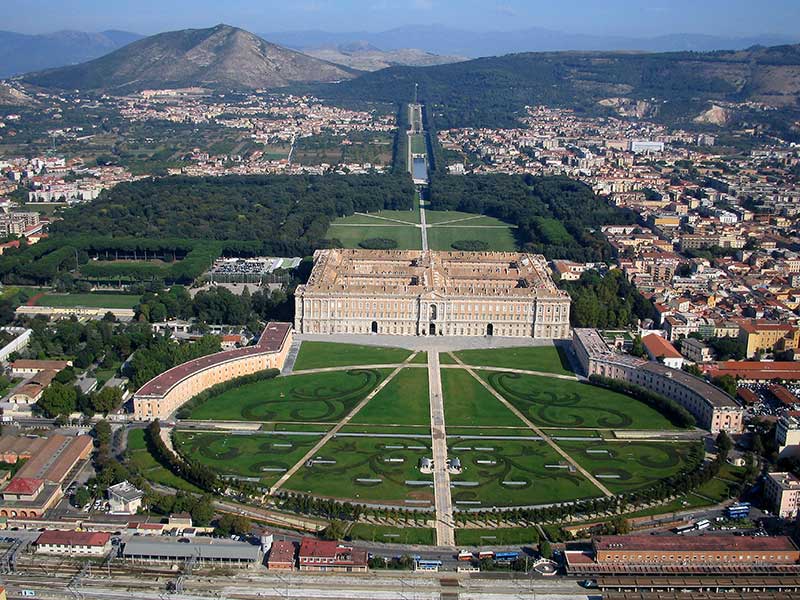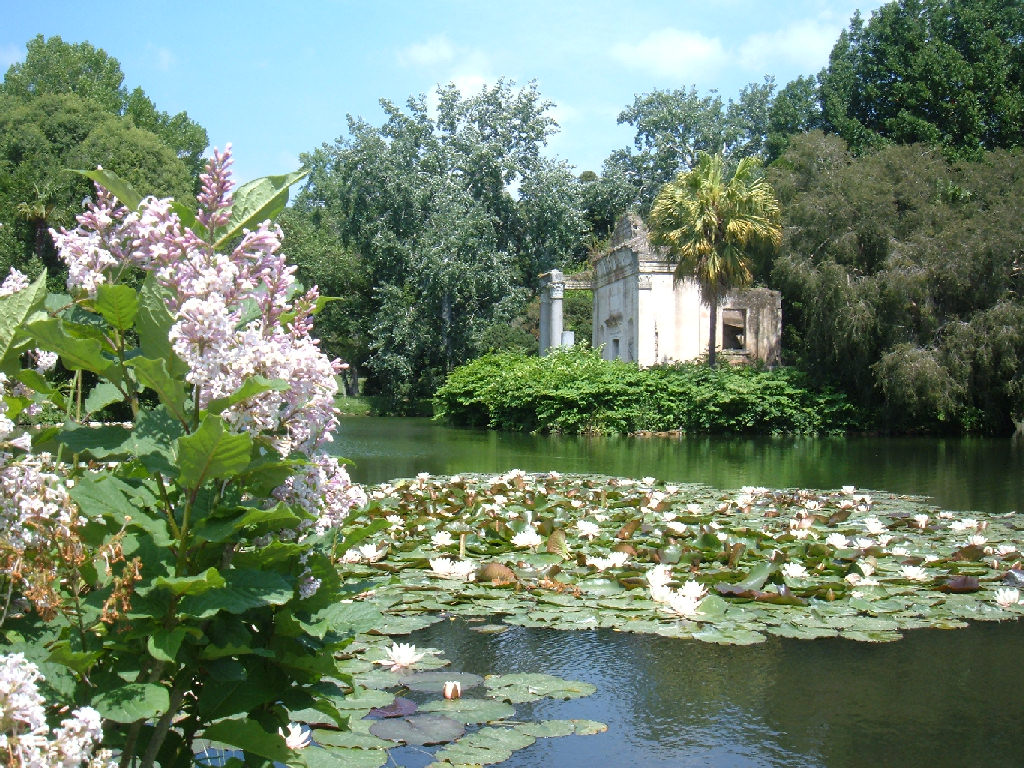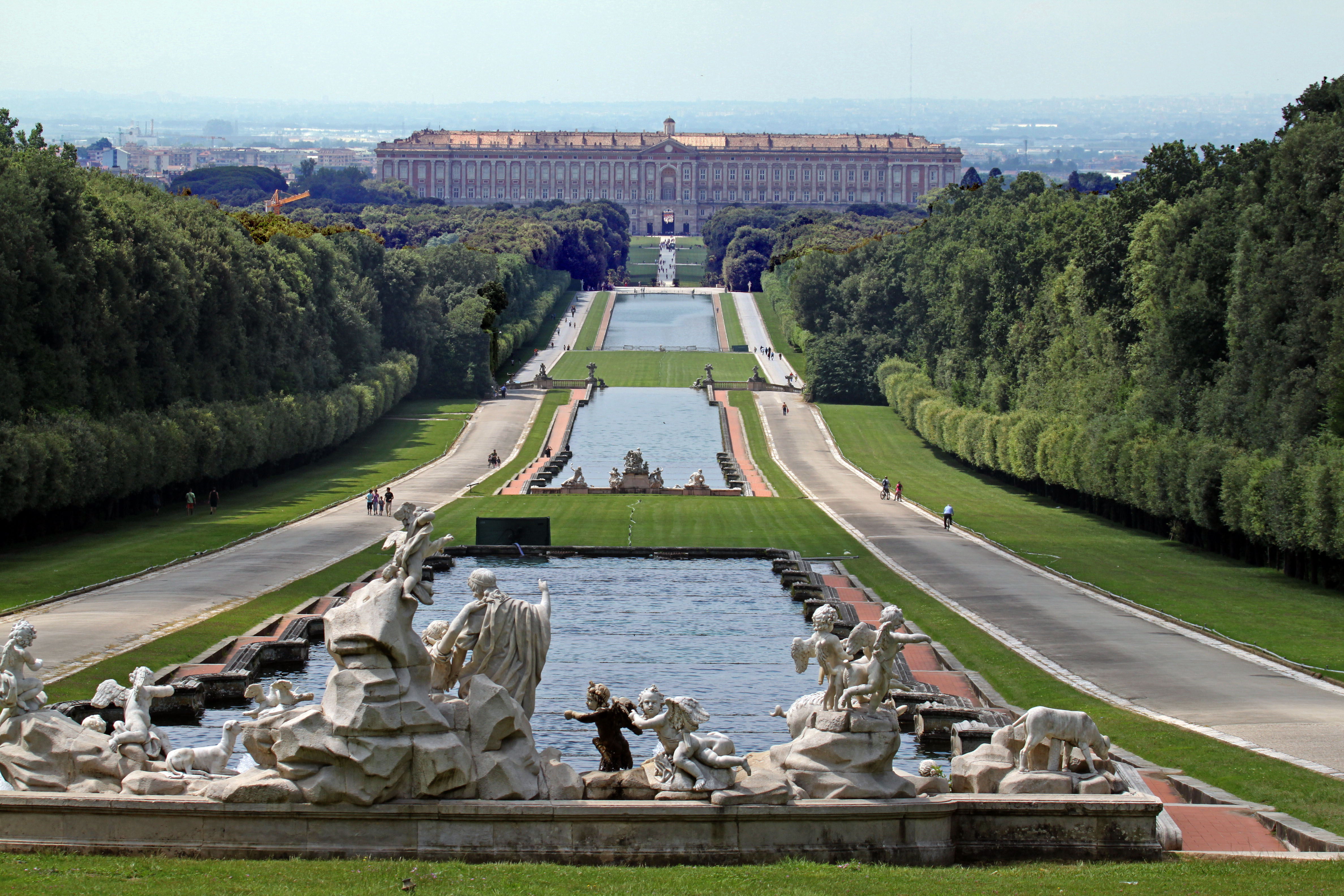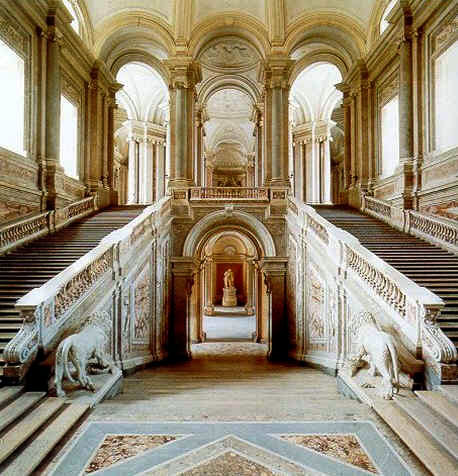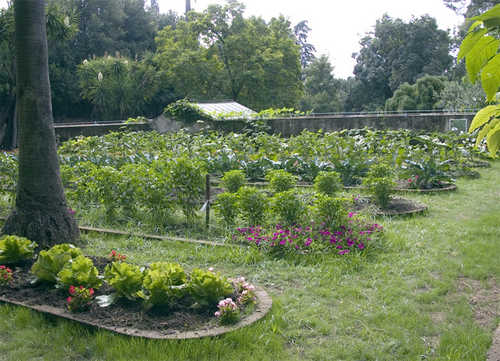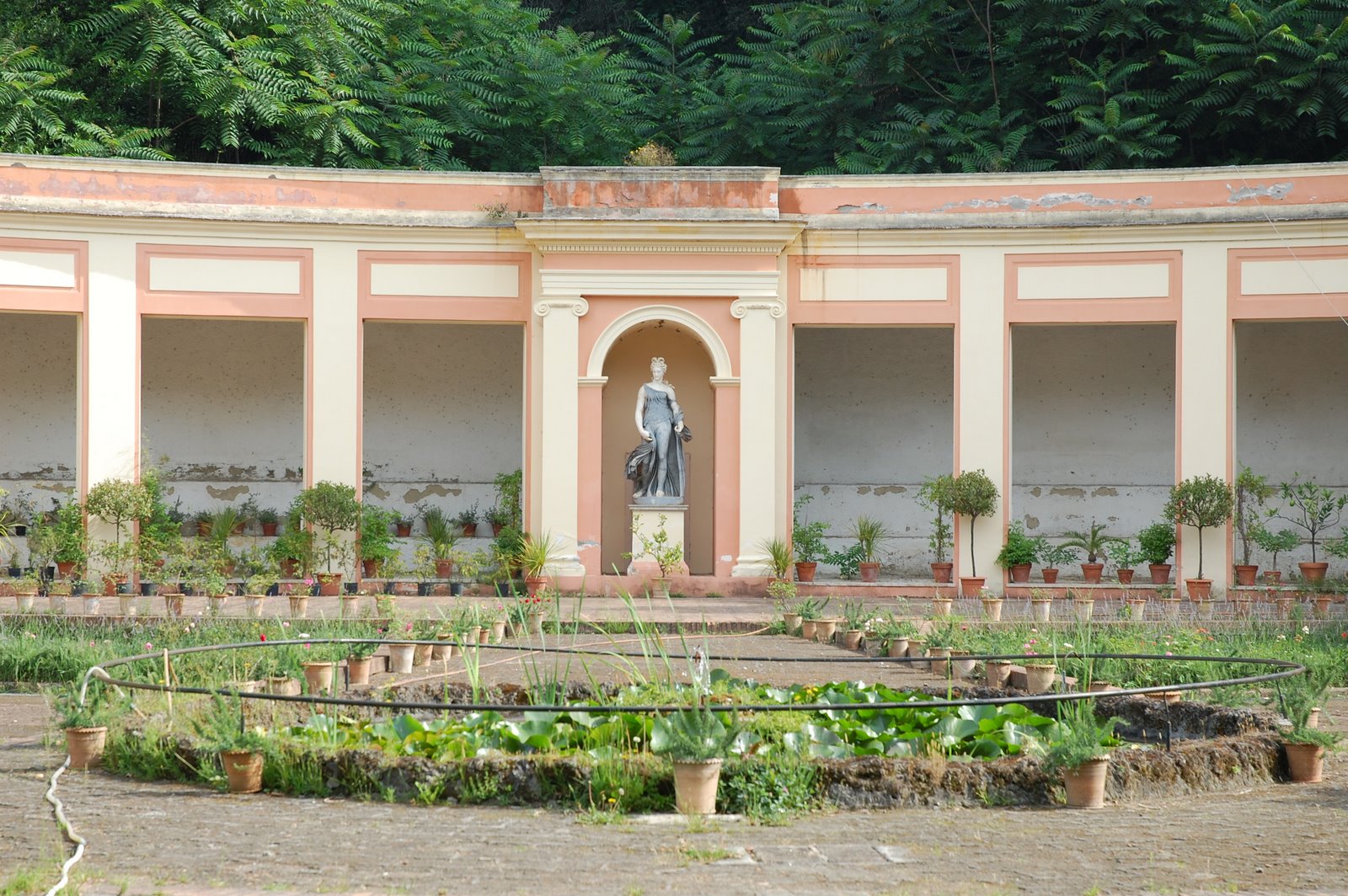
Reggia di Caserta e Parco
This post is also available in:
 Italiano (Italian)
Italiano (Italian)
It is located on the slopes of Caserta’s hills and it is a historical residence owned by the Bourbon royal family. It was proclaimed Heritage of Humanity by UNESCO and commissioned by Charles III of Bourbon in 1751, following the designs and directions of the well-known architect Luigi Vanvitelli, who is considered one of the major representatives of rococo. The palace is surrounded by a wide park with a length of 3 km, south-north development and an extension of 120 hectares. There are two sections in the park: the English and the Italian garden.
The Italian and English garden
The main alley starts at the centre of the rear façade and it is characterised by a series of fountains, little waterfalls, pools and the famous Grande Cascata, which starts in the northern part of the Italian Garden, connected to the English garden.
The Italian garden designed by Vanvitelli and ended by his son Carlo after his death (1773) was projected in order to compete with the magnificence of Versailles’ gardens. It had also a logistic function: the road which leads here, alley Carlo III, represents only a part of what should have been a direct road connecting the palace to Naples, in order to make the transfers of the royal family easier.
The garden looks like an enormous meadow, bordered by high hedges and ordered by a geometrical scheme with wide flowerbeds. It is crossed by remarkable works of hydraulic engineering such as the artificial lake “Peschiera Grande”, destined to the nursing of trouts and to the naval games of little Ferinand IV, with a central island to assault; fountains of Margherita, Eolo, Diana and Actaeon, Venus and Adonis, Ceres, and the long Grande Cascata, fed now by the waters of Monte Taburno. There is also the “Castelluccia“, a small fortress which was used as such .
The English Garden is characterised by grassy meadows and it was built from 1785 by Sir John Andrew Graefer at the behest of Regina Maria Carolina of Austria, in order to follow the European mode of the English style gardens created by William Kent.
It occupies a surface of 23 hectares on which Graefer programmed the settlement of various British, American and Netherlandish plants, in order to carry on his botanical studies, which soon transformed in hills, clearings, lakes and channels fed by the Acquedotto Carolino. According to the landscape mode, many fabriques were built, they were used as places of entertainment, among artificial ruins and sinuous paths. His interest in Botany influenced part of the activities inside the garden: there were a fruit bowl, an asparagus field, a fragoliera vase with works directed towards the cultivation and multiplication of bulbs, ornamental and leguminous plants. For these reasons, stoves and an assortment of vases were organised.
BOURBON GREENHOUSE AND VENUS’ BATH
A glass-iron greenhouse is located in an isolated area of the English Garden and it is dedicated to the cultivation of plants: named Bourbon Greenhouse, it represents an example of a building used to protect vegetables and a testimony of the structures, which started being created at the beginning of the 19th century in the main Italian gardens. Rhythm is given to the neoclassical facade thanks to imposing Doric columns. The roof was made with iron and glass, which increases the interior brightness.
Venus’ Bath is another interesting place and it was called in this way, because of the presence of a Carrara marble statue representing the goddess while exiting the water of a lake. In addition, it is surrounded by laurels, holm oaks and an exceptional specimen of a secular Taxus baccata.
Plants in the English Garden
The English garden became a true botanical orchard, where it was possible to see remarkable specimen of Cinnamomum camphora, Cedrus libani and what is supposed to be the first plant of camelias (Camellia japonica) arrived in Europe and destined to the garden at the behest of Maria Carolina. There are numerous areas dedicated to 14 plant collections such as palms, cactaci, ivies, trees in open land, water plants, oaks, eucalyptuses, maples, nut trees, box shrubs, conifers, fruit trees, camelias and ferns.
SURROUNDING AREA
San Leucio: it belonged to the counts of Caserta, became with Ferdinand IV a small, independent colony with its laws and industrial district, whose silk art became world-famous.
Caserta Vecchia: ancient medieval village.
Acquedotto Carolino: remarkable work of hydraulic engineering and one of the most important works of the reign of Charles l of Bourbon.
This post is also available in:
 Italiano (Italian)
Italiano (Italian)
Contatti
Via Douhet, 2/a - Caserta(CE)
0823 448084
caserta@civitamusea.it
http://www.reggiadicaserta.beniculturali.it
Altre info
Appartamenti: intero euro 11.00; ridotto euro 5.50; Appartamenti con Parco e Giardino Inglese: intero euro 14.00; ridotto euro 7.00
Aperto tutto l'anno. Chiuso tutti i martedì, 1 Gennaio, 1 maggio, 25 dicembre.
Appartamenti: dalle 8:30 alle 19:30 (ultimo ingresso ore 19.00); Giardino Inglese: dalle 8.30
